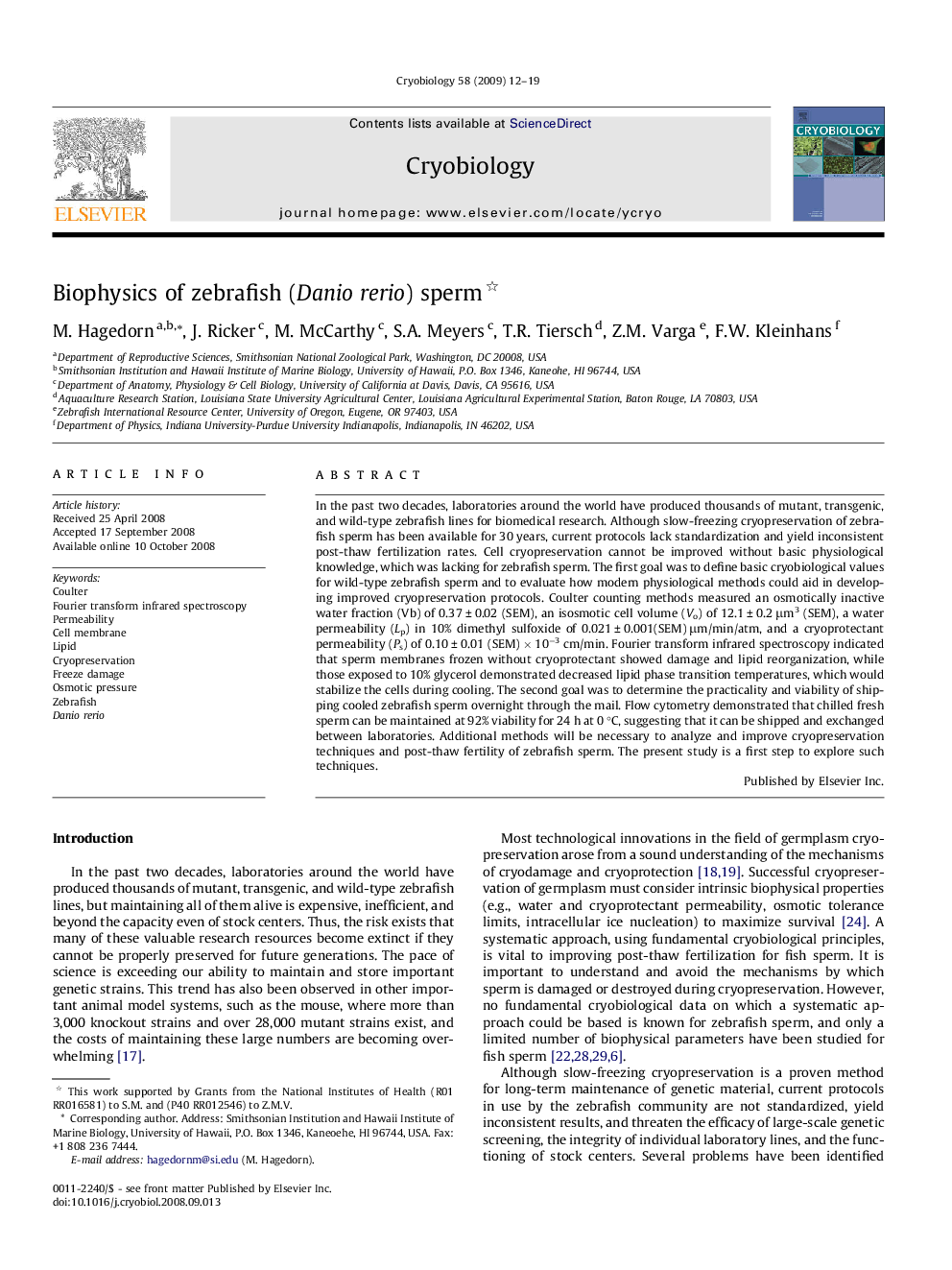| Article ID | Journal | Published Year | Pages | File Type |
|---|---|---|---|---|
| 2169213 | Cryobiology | 2009 | 8 Pages |
In the past two decades, laboratories around the world have produced thousands of mutant, transgenic, and wild-type zebrafish lines for biomedical research. Although slow-freezing cryopreservation of zebrafish sperm has been available for 30 years, current protocols lack standardization and yield inconsistent post-thaw fertilization rates. Cell cryopreservation cannot be improved without basic physiological knowledge, which was lacking for zebrafish sperm. The first goal was to define basic cryobiological values for wild-type zebrafish sperm and to evaluate how modern physiological methods could aid in developing improved cryopreservation protocols. Coulter counting methods measured an osmotically inactive water fraction (Vb) of 0.37 ± 0.02 (SEM), an isosmotic cell volume (Vo) of 12.1 ± 0.2 μm3 (SEM), a water permeability (Lp) in 10% dimethyl sulfoxide of 0.021 ± 0.001(SEM) μm/min/atm, and a cryoprotectant permeability (Ps) of 0.10 ± 0.01 (SEM) × 10−3 cm/min. Fourier transform infrared spectroscopy indicated that sperm membranes frozen without cryoprotectant showed damage and lipid reorganization, while those exposed to 10% glycerol demonstrated decreased lipid phase transition temperatures, which would stabilize the cells during cooling. The second goal was to determine the practicality and viability of shipping cooled zebrafish sperm overnight through the mail. Flow cytometry demonstrated that chilled fresh sperm can be maintained at 92% viability for 24 h at 0 °C, suggesting that it can be shipped and exchanged between laboratories. Additional methods will be necessary to analyze and improve cryopreservation techniques and post-thaw fertility of zebrafish sperm. The present study is a first step to explore such techniques.
